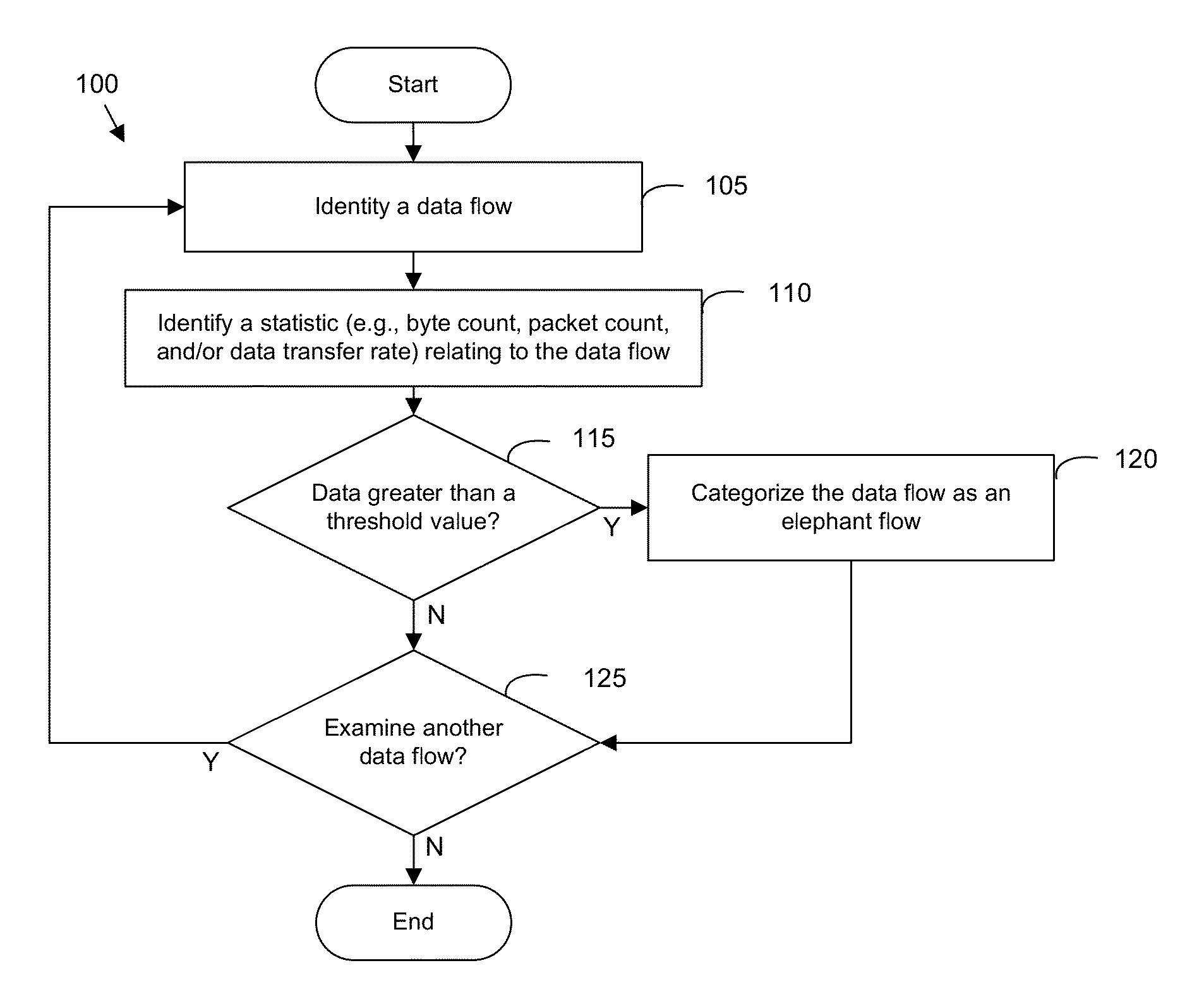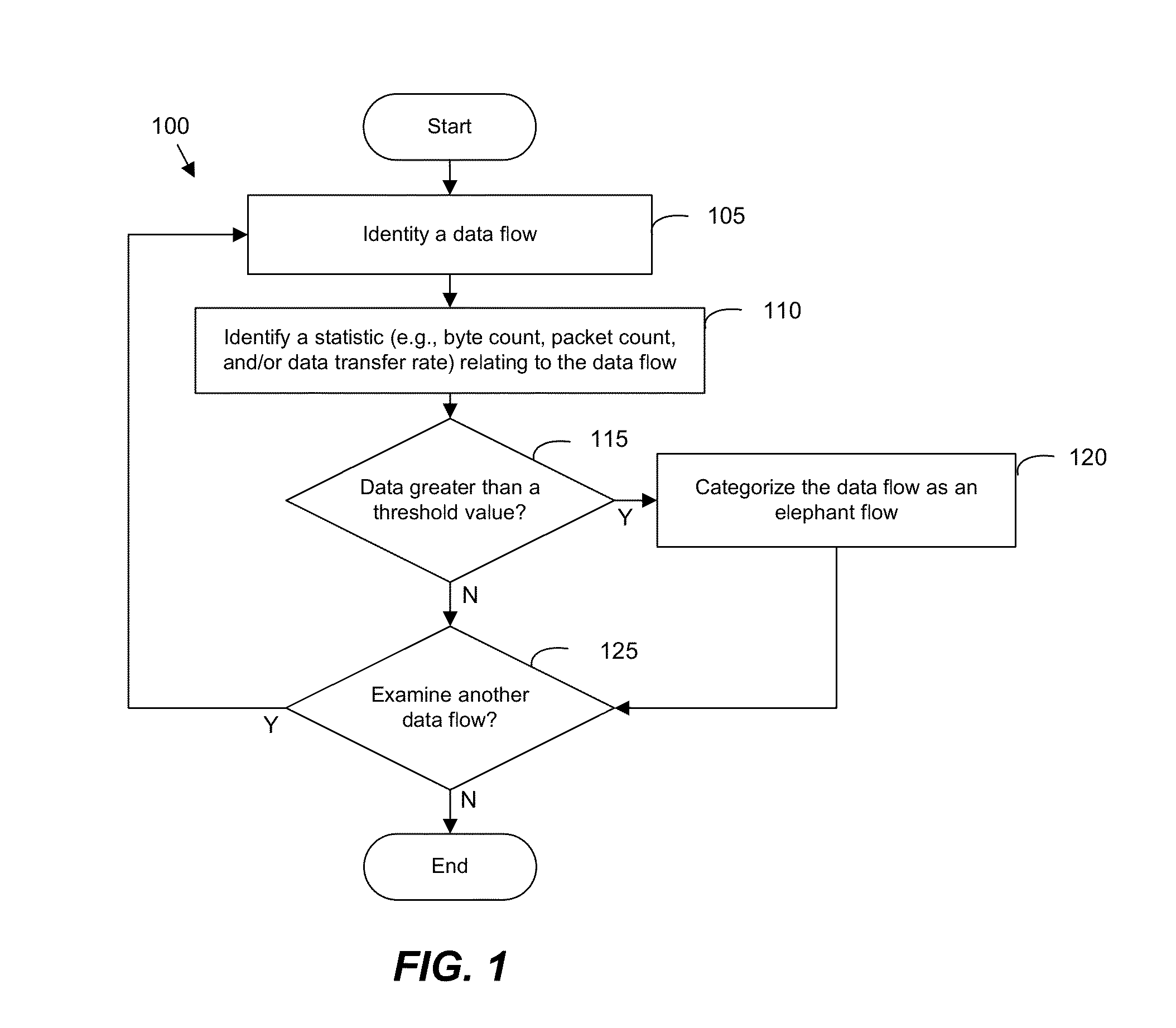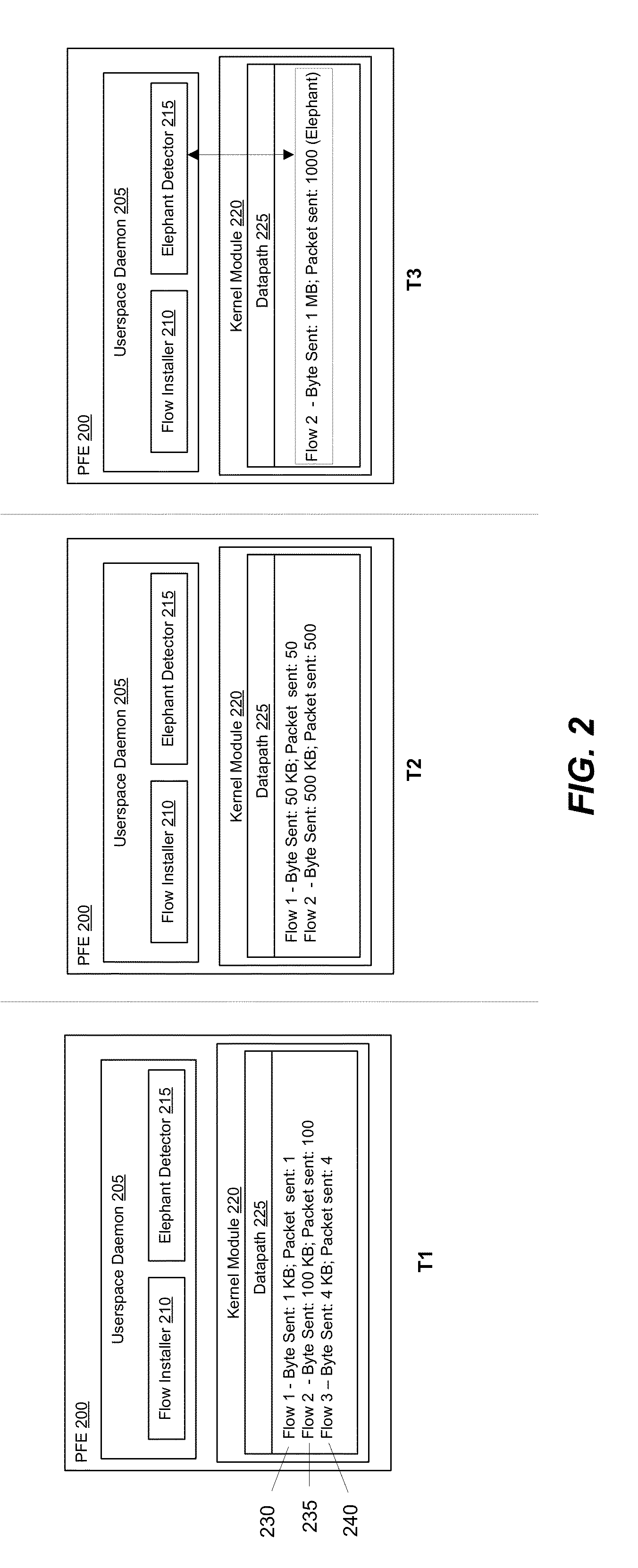Detecting and handling elephant flows
a technology for applied in the field of detecting and handling elephant flows, to achieve the effect of facilitating breaking and ensuring the simpleness of the fabri
- Summary
- Abstract
- Description
- Claims
- Application Information
AI Technical Summary
Benefits of technology
Problems solved by technology
Method used
Image
Examples
example implementation
[0043]B. Example Implementation
[0044]An example implementation of a forwarding element that examines statistics will now be described. FIG. 2 provides an illustrative example of a forwarding element 200 that detects elephant flows using statistical data associated with different flow entries. The figure shows the forwarding element 200 at three different times (T1-T3).
[0045]In the example of FIG. 2, the forwarding element 200 is a software forwarding element, such as Open vSwitch. The software forwarding element operates on a computing device (e.g., x86 box). However, the forwarding element can be a hardware forwarding element that has hardware designed to support in hardware forwarding. For instance, the forwarding element may have application-specific integrated circuits (ASICs) with a Content Addressable Memory (CAM) or Ternary CAM (TCAM).
[0046]In some embodiments, the forwarding element is an edge forwarding element. The edge forwarding element is in a unique position to monitor...
example process
[0070]B. Example Process
[0071]Having described a brief overview of marking packets, an example process will now be described. FIG. 4 conceptually illustrates a process 400 that some embodiments use mark packets associated with an elephant flow. In some embodiments, the process 400 is performed by a forwarding element. The process 400 begins when it detects (at 405) an elephant flow.
[0072]In some embodiments, the process 400 detects an elephant flow based on one or more statistics associated with a data flow. The process of some embodiments the size of each of several packets in a data flow to determine whether the data flow is an elephant flow. The process inspects the size because, in order for the packet to be of a certain size, the data flow had to already have gone through a slow start in which smaller packets are transferred and by definition be an elephant flow. As an example, the Transmission Control Protocol (TCP) uses a slow start algorithm in order to avoid congesting the ...
example implementations
[0077]B. Example Implementations
[0078]FIG. 5 provides an illustrative example marking a packet and processing the packet based on the marking. In particular, the figure shows an implementation of an edge forwarding element 500 that mark the packet associated with an elephant flow. The figure also shows an implementation of a non-edge forwarding element 525 that process the packet based on the marking Four operational stages 505-520 of the forwarding elements 500 and 525 are shown in the figure.
[0079]In the first stage 505, the edge forwarding element 505 detects an elephant flow. The second stage 510 shows the edge forwarding element 505 marking a packet that belongs to the elephant flow. This is followed by the third stage 515, which shows the edge forwarding element 505 forwarding the packet 545 to the non-edge forwarding element 525.
[0080]In the fourth stage 520, the non-edge forwarding element 505 has received the packet from the edge forwarding element 525. Specifically, the pa...
PUM
 Login to View More
Login to View More Abstract
Description
Claims
Application Information
 Login to View More
Login to View More - R&D
- Intellectual Property
- Life Sciences
- Materials
- Tech Scout
- Unparalleled Data Quality
- Higher Quality Content
- 60% Fewer Hallucinations
Browse by: Latest US Patents, China's latest patents, Technical Efficacy Thesaurus, Application Domain, Technology Topic, Popular Technical Reports.
© 2025 PatSnap. All rights reserved.Legal|Privacy policy|Modern Slavery Act Transparency Statement|Sitemap|About US| Contact US: help@patsnap.com



